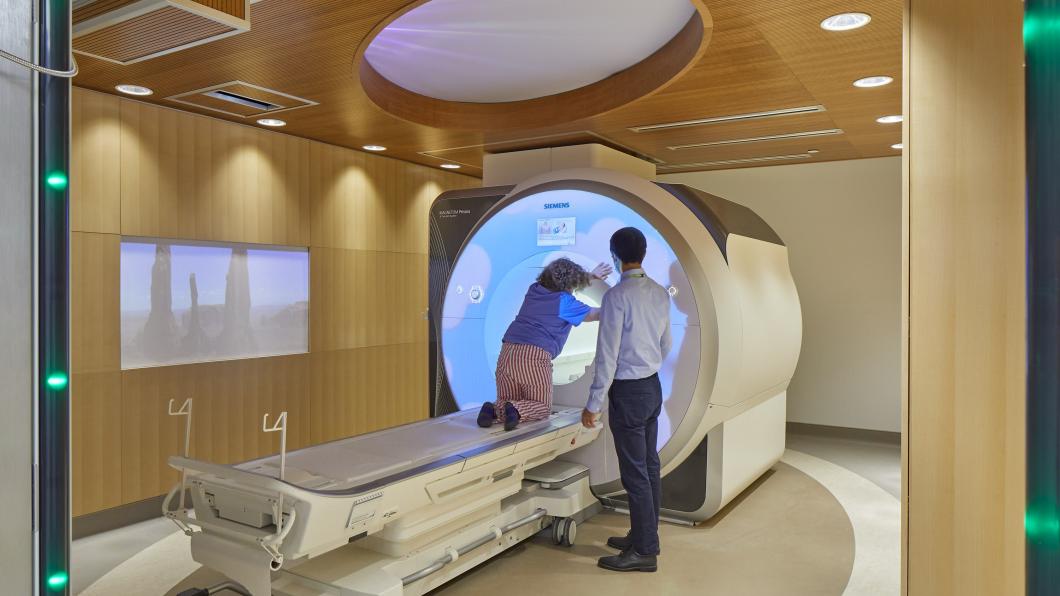
Mapping Modes of Communication with Dr. Deryk Beal
Dr. Deryk Beal is sharing his expertise and research on communication health, to spread awareness about the field of speech-language pathology.
Each May, Speech-Language & Audiology Canada (SAC) promotes and celebrates communication health and the field of speech-language pathology (S-LP). With this year’s theme “Connecting Through Communication. S-LPs and audiologists empower you” in mind, we couldn’t think of someone better than Dr. Deryk Beal, to tell us how discoveries at the Bloorview Research Institute (BRI) are advancing the field and providing clients with innovative care.
“Everyone communicates in their own way”
According to Dr. Beal, people often forget that “everyone communicates in their own way.” While for many of us listening, watching, and remembering what is said comes naturally, for someone who has a brain injury or a communication disorder those activities can be quite challenging.
When we are communicating it is important to remember that the goal is to understand the other person’s message and allow them as much time as they need to get their point across.
“Connecting through communication” at Holland Bloorview
The BRI’s CONNECT Lab is working to understand how the brain supports communication, as well as many other day-to-day activities to provide clients with the best tools and care.
For example, magnetic resonance imaging (MRI) is used to map the networks of the human brain involved in activities, like speech, allowing researchers to understand exactly how brain areas influence speech performance.
Dr. Beal told us, “The MRI brain maps allow us to understand what parts of the brain play a role in a given task.” Likewise, similar stimulation techniques, such as transcranial direct current stimulation (tDCS) can also be used in treatment. “By directing brain stimulation at the desired brain area, kids who are striving to learn, or re-learn, speech can quickly reach new heights and skills.”
Dr. Beal shares the latest and greatest from the BRI
We had the chance to talk with Dr. Beal about his exciting work at Holland Bloorview, here’s what he had to say:
Are there any innovative and recent discoveries in the field of communication that you can share?
“Yes! An important goal of the CONNECT Lab is to continue to build on discoveries and to test if they are viable solutions for the children and families that we serve here at Holland Bloorview.
There is a growing body of research evidence to suggest that brain stimulation with transcranial magnetic stimulation (rTMS) is helping children with a variety of communication disorders, from stuttering (repetitions or silent blocks that interrupt speech) to aphasia (the loss of language after stroke) to improve their communication.
Right now, we’re testing if repetitive rTMS directed at the brain can help children with autism regulate their emotions and improve social communication. We are particularity interested in learning if our treatment is helpful for children who are non-verbal and if they are accepting of the rTMS brain stimulation.
We recently found success with a young boy who is non-verbal. When entering the lab he headed straight for the treatment chair, pulling the rTMS equipment towards his head all on his own. This let us know that not only was he accepting of the treatment but that he was ready to go!”
We hear you get to work a lot with Kevin (everyone’s favourite MRI Machine). What role do MRI scans play in S-LP research?
“We are studying how the sound of our own voice during speech helps us to learn and maintain how our speech sounds. These are foundational skills for learning our first and multiple languages as well as relearning language after a brain injury.
Participants get an MRI of the brain before they complete a speech experiment. The data allows us to understand the brain characteristics that are associated with superior performance of speech. We can later use this information to determine neurotargets for rTMS or tDCS speech treatment adjuncts.”
Can you tell us a little bit about what makes MRI research at Holland Bloorview so unique?
“Often research studies require children to undergo multiple MRI scans, it is of the utmost important to us that every child has a fun and positive experience.
We prepare in advance, making the MRI a fun environment to visit. We ensure the tasks are engaging while they are in the MRI, and create a comfortable and supportive space for them and their families. It’s a very rewarding part of the job.”
Check out the CONNECT Lab’s current research.